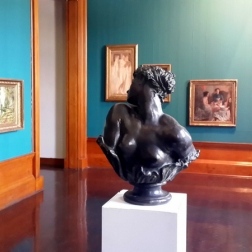Lifestyle/Community
JAG celebrates its 100th with an exhibition
This month the Johannesburg Art Gallery (JAG) building turns 100 years. Its founders, Lady Florence and Sir Lionel Phillips, decided to give the gritty mining town of Johannesburg a glimmer of culture and art.

MARGOT COHEN
JAG was officially opened in November 1910 is what is now the old showgrounds at Milner Park, now part of Wits campus.
More than 1 700 art lovers gathered at Joubert Park where the Gallery is situated, last week to mark the historic landmark which was designed by architect Edwin Luytens.
The building is a national monument and includes works by many South African celebrated artists. The centenary exhibition showcases the masters as well as digital works. Among the exhibits is the traditional African, Moments in a Metro exhibition and a display of South African works between 1954-1970.
The artworks date from the 17th century to contemporary Sekoto, Kentridge, Dali, Francis Bacon and recently a Damien Hirst.
Historic curator of JAG since 1991, Sheree Lissoos, has put together an interesting collection of Pre-Raphaelite paintings for the centenary. These came to the gallery between 1948-‘50 with the Neumann bequest from Sigismund Neumann and consist of 58 works in different media by Victorian artists.
Neumann’s works were stored at the Tate Gallery for some time. He came to South Africa in his late teens to seek his fortune on the Kimberley diamond mines and became a successful mining magnate. He later owned a thriving merchant banking business in London.
In 1913 he donated a small but representative pre-Raphaelite collection of paintings and drawings to JAG.
Neumann’s gift was part of the £50 000 in funds needed by Lady Florence Phillips for a nucleus art collection at JAG from funds raised by public subscription in London in response to her requests for funds.
Lissoos herself has always been fascinated by the pre-Raphaelites. Among the important works displayed are portraits of Ruskin, Rossetti and William Hunt.
She says that of all the PRB artists, William Hunt was the most consistent in the pursuit of serious subject matter and fidelity to nature. “The paintings were often accompanied with lines of poetry or verse,” she adds.
Lissoos has several art history degrees and also a fine arts degree . She lectured at Wits for 18 years before joining the Gallery.
She is determined to get the art-loving public back to the Gallery; it’s a misconception that the area is unsafe, she claims.
* The exhibitions are well worth seeing and will be on until March 2016.